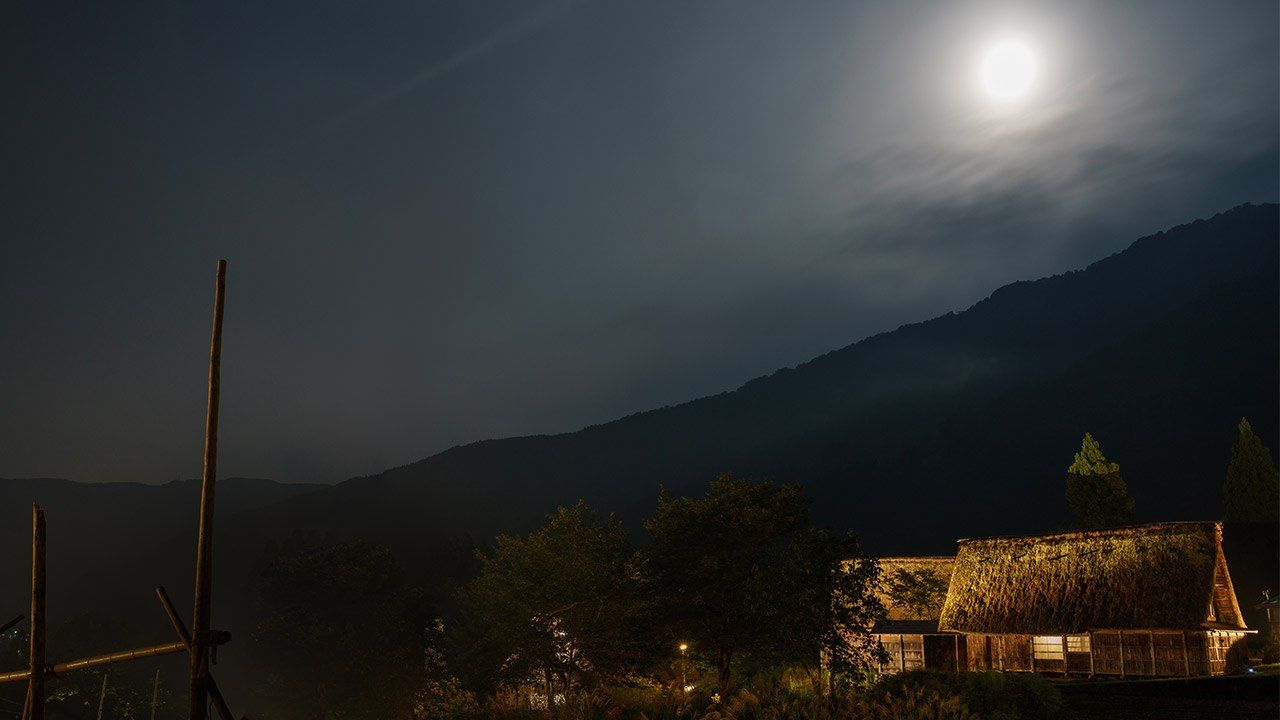
A Journey Through Japanese Haiku
Transformative Moonlight
Culture Environment Lifestyle- English
- 日本語
- 简体字
- 繁體字
- Français
- Español
- العربية
- Русский
月天心貧しき町を通りけり 蕪村
Tsuki tenshin / mazushiki machi o / tōrikeri
Mid-sky moon—
I pass through the
poor quarters(Poem by Buson, perhaps written around 1768.)
Haiku poets often traveled to scenic spots to appreciate the moon, such as Akashi in what is now Hyōgo Prefecture and Sarashina in Nagano Prefecture. However, Buson’s haiku here is a little different.
“As the moon reached the center of the night sky, I passed through the poor quarters.” Perhaps the poet is following the moon and suddenly notices he has arrived in an impoverished part of the town. But the district’s drab daytime appearance is transformed under clear moonlight, as if purified, so that it is filled with calm. It is an unexpected discovery in the sleeping town.
The phrase tsuki tenshin, describing the moon’s position, comes from a work by the eleventh-century Chinese poet Shao Yong, in which he writes, “When the moon reaches the center of the sky, the wind blows on the surface of the water.” It continues by saying that “there must be very few people who enjoy this bracing feeling,” and through Buson’s reference such a feeling is also present in his poem. It is the haiku spirit here that finds interest in the poor quarters, rather than a famous moon-viewing location.
Buson initially began the haiku Meigetsu ya rather than Tsuki tenshin, referring to the meigetsu or mid-autumn moon, which is considered the finest for viewing, but in this case it is difficult to see the purpose. Through the allusion to Shao Yong’s poem, Buson succeeds in expressing the purity of the scene.
(Originally published in Japanese. Banner photo © Pixta.)
literature Yosa Buson haiku Japanese language and literature